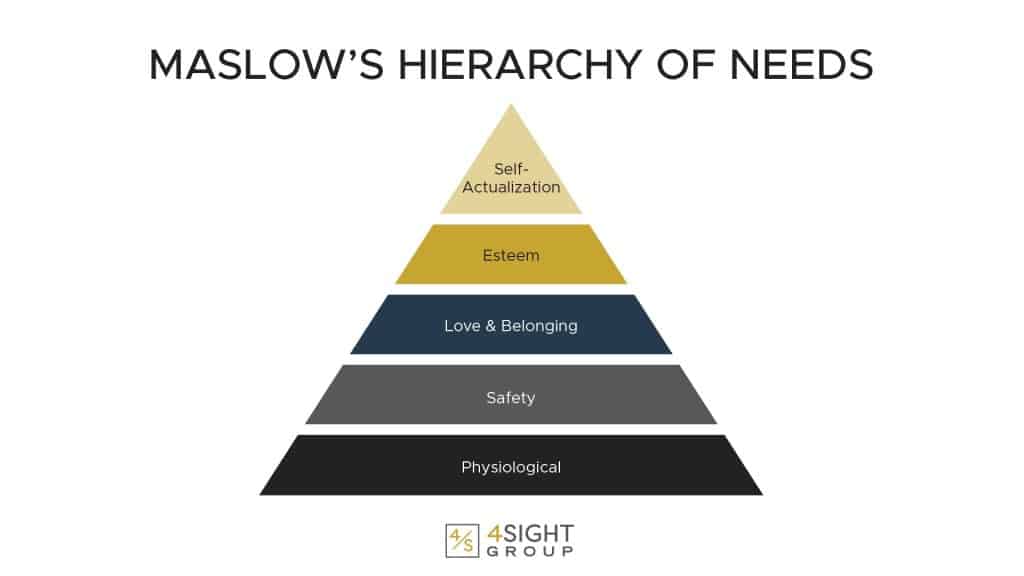
This post on The Great Resignation is written by Jenni Catron. Jenni is a leading voice on how to create world-class organizational culture. Jenni is the Founder and CEO of The 4Sight Group and is a member of my Speaking/Consulting Team.
By Jenni Catron
As the pandemic recedes, a new issue is emerging for leaders. Economists are calling it “The Great Resignation.” Studies are showing that at least 40% of workers are contemplating quitting their jobs.
After a year of reevaluating and readjusting, we’re collectively entering what psychologists say is the 6th stage of grief: a pursuit of meaning and purpose. And this pursuit of meaning and purpose is causing many people to reconsider why they do what they do.
This dynamic creates a unique opportunity for leaders to build cultures in which purpose is clear and team members can find meaning in their contribution.
As leaders who are shaping the culture of our teams, it’s our responsibility to bring clarity to who we are and how we work to achieve our mission. And just for clarity’s sake, if you lead a team of volunteers, if you lead a ministry or department, if you’re the Lead Pastor or the CEO, there is a culture that you are shaping and forming.
Whether it’s two people or 2,000, you have the opportunity, privilege and responsibility to be intentional in creating a culture that great people are clamoring to be a part of and want to remain a part of.
The entire point of culture is the stewardship of people in pursuit of our mission. That’s your responsibility as a leader. Culture isn’t fluffy stuff or a “nice to” perk that you’ll get to if you have time. It’s the very linchpin that ties your purpose and strategy together. You can’t achieve your purpose without a team of people to make it happen.
The entire point of culture is the stewardship of people in pursuit of our mission. @JenniCatron Click To TweetArguably the greatest challenge ahead of us post-pandemic has less to do with adjusting our strategies and more to do with how we retain our team members.
Let me take you back to your freshman year Psychology 101 class. You may remember learning about Maslow’s Hierarchy of Needs.
“Maslow’s hierarchy of needs is a motivational theory in psychology comprising a five-tier model of human needs, often depicted as hierarchical levels within a pyramid.

From the bottom of the hierarchy upwards, the needs are: physiological (food and clothing), safety, love and belonging, esteem, and self-actualization. Maslow’s belief was that needs lower down in the hierarchy must be satisfied before individuals can attend to needs higher up.”
Similar to Maslow’s hierarchy, there is a hierarchy of employee needs that impact the culture of your team. Let’s call it the Culture Hierarchy of Needs.

Like Maslow’s hierarchy, there are 5 needs that impact a team member’s ability to grow with your organization and positively contribute to the health of your culture. And in the coming “Great Resignation,” attending to these needs may be our best effort to retain great staff.
Arguably the greatest challenge ahead of us post-pandemic has less to do with adjusting our strategies and more to do with how we retain our team members. - @JenniCatron Click To TweetHere are 5 Needs To Fill To Fight The Great Resignation:
1. Tools for the job
This is about making sure team members have the basic tools to do their job. Are you equipping your team with what they need to do their job in today’s environment?
Historically this would have meant equipping them with computers that work, adequate space and time to do their work, and appropriate compensation. Today, this may also mean accommodations for working from home.
When team members are distracted because they don’t have the appropriate tools to do their work, it becomes difficult for them to contribute at a higher level. When our basic needs aren’t met, we’re fighting for survival rather than focusing on achieving the mission.
Now, I know what you may be thinking: we don’t have the budget for all the latest gadgets that my team members want. I get that, but I’m not talking about extravagance. What is important is that we truly understand what our team members need and are consciously ensuring that we’re not unintentionally frustrating and inhibiting them from doing their best work.
You know where I see this problem most often? In poor onboarding for new staff. It might not even be that we don’t have the appropriate tools, it’s more that we don’t do a good job of intentionally equipping our staff, especially new staff. You can make sure that staff members have their basic needs met by ensuring they are adequately equipped and trained when they begin.
When team members are distracted because they don’t have the appropriate tools to do their work, it becomes difficult for them to contribute at a higher level. - @JenniCatron Click To Tweet2. Organizational Clarity
Organizational clarity means I understand what is expected of me, I have clarity of my place in the organization, and my role and responsibilities are clear. This stage answers the questions “Who are we?” and “How do we behave in order to achieve our mission?” When leaders provide organizational clarity, team members are secure in their role and their place on the team.
As leaders, to fight The Great Resignation, we need to provide clarity for:
- shared purpose and goals
- organizational structure
- defined roles and responsibilities
- values and behaviors that define success for the team
I can not overemphasize the power of this stage. It’s essentially the crux of culture.
Here is the challenge: if you’re the leader, this stuff feels clear to you. We undervalue it and underestimate its impact because it’s not a perceived need of ours. Culture feels clearest at the top, but I promise you that your culture is not as strong as you think it is.
Clarity at this stage will be the game-changer in building a culture that is aligned and working effectively to achieve the mission.
When leaders provide organizational clarity, team members are secure in their role and their place on the team. - @JenniCatron Click To Tweet3. Psychological Safety
Psychological safety is about employees feeling emotionally secure when they are at work.
Organizational psychologist Adam Grant explains it this way“…psychological safety is not a matter of relaxing standards, making people comfortable, being nice and agreeable, or giving unconditional praise. It’s fostering a climate of respect, trust, and openness in which people can raise concerns and suggestions without fear of reprisal.”
It builds upon the first two needs in that if I have the tools I need to do my job and I’ve been provided clarity for what to do and how to do it, I am prepared to better engage with my team. In order to find synergy and alignment, team members need to build trust and respect for one another, be self-aware and others-aware, and feel like they can actively bring their best work.
This need is being met when each team member is actively contributing. At this stage unity is strong, the organization demonstrates a high commitment to development and growth opportunities. Team members feel valued and trusted. Their voice is respected. We are actively developing leaders and seeing people grow and thrive.
In order to find synergy and alignment, team members need to build trust and respect for one another, be self-aware and others-aware, and feel like they can actively bring their best work. - @JenniCatron Click To Tweet4. Connection
One of our great needs as humans is belonging. We are designed for community. We’re designed to do life with others. It’s the functional definition of the word team – two or more people working together to achieve a goal.
Research tells us that employees don’t quit jobs, they quit people. If employees have their basic needs met (stage 1), they have safety and clarity in their work (stage 2), and they feel comfortable to actively contribute (stage 3), they will naturally build connections with their co-workers. When we’re addressing this need, team members want to be together.
As leaders, we foster this and protect this need of culture by ensuring that we have organizational rhythms that allow for connection and that we create a culture of mutual commitment and accountability.
It’s important here that we don’t create false harmony or toxic positivity, but that we lean into the principles of healthy relationships where candor, honesty, and integrity drive our interactions with one another. The values we defined in stage two must be consistently lived into in order for stage four to be realized.
Research tells us that employees don’t quit jobs, they quit people. - @JenniCatron Click To Tweet5. Personal Fulfillment
This final need is an outcome. You can’t force anyone to find personal fulfillment in their work, but you can create an environment that fosters it by attending to the first four needs and thereby setting the stage for this one to be achieved as well.
When team members are personally fulfilled, they are fully utilizing their gifts with a team that they love, doing work that is fulfilling. The best part of this is that when team members are operating at this level, they are actively reproducing this in others. They notice other team members at different stages and are personally invested in helping everyone on the team move through the stages.
When an organization’s culture achieves the Culture Hierarchy of Needs, employees are less likely to be among the 40% considering a job change in the great resignation because they have found purpose and meaning in their work.
Extraordinary culture is possible. It’s not some abstract thing that you as a leader have no control over. In fact, you have ridiculous control over this. Every great leader longs to have a great team. Understanding these fundamental needs and being purposeful to meet them gives you the clarity you need to achieve the culture you want.
You can’t force anyone to find personal fulfillment in their work, but you can create an environment that fosters it. - @JenniCatron Click To Tweet